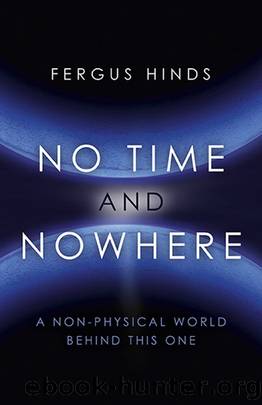No Time and Nowhere by Fergus Hinds

Author:Fergus Hinds [Hinds, Fergus]
Language: eng
Format: epub
ISBN: 978-1-78535-186-0
Publisher: Iff Books
Published: 2016-08-26T00:00:00+00:00
The Elements of a Dream
This is a brief account of the theory put forward by Martin Seligman and Amy Yellen of the University of Pennsylvania in Behaviour Research and Therapy on ordinary dreaming (Seligman and Yellen 1987). They identified their broad form and the way the main parts are assembled. The essence of their proposal is that dreams consist of just three elements.
The first they call visual episodes or visual bursts. These are vivid images of brief duration whose essential feature is that their subject matter is random; it is free of links with anything that has just been dreamed beforehand, and uninfluenced by the emotional tone of the dream itself or by the subjectâs feelings before it started. They propose that their bursts can be identified by being vivid, central to the visual field, and capable of being scanned by the dreamer who can direct his attention to any part of them.
The second element which, together with the bursts, makes up the skeleton of the dream comprises the emotional episodes â loosely the dreamerâs feelings. They say these probably have âhumoral underpinnings and humoral time coursesâ, growing and declining over minutes or hours. These feelings have a physiological basis, such as real aches, thirst, discomforts; they may be caused by the topic of the dream; or they may reflect a dreamerâs waking-life anxieties.
The third and last element is integration, which is the dreaming mind trying as well as it can to synthesize the emotional tone and the visual bursts into the least imperfect plot of which it is capable. The form of this integration is largely visual. It consists of a succession of images that are less vivid and less bizarre than the visual bursts, all of them self-supplied from the dreamerâs own experience. By and large a dream consists of vivid random bursts â one of which is needed to start it â filled out with duller images that follow one another in a loosely connected stream.
Central to their whole theory is the proposition that the dreaming mind has to present a narrative whose development conforms to both the emotional tenor and the initiating visual burst. Thereafter each duller integrative image appears by involuntary association with its predecessor. Though tied more or less to the theme, this association is by a peculiarly imperfect process whose principle is conspicuously not by meaning as it is awake. The dreaming mind may juxtapose actual events or people or places that were experienced in separate unrelated waking contexts. Or it may select an image for its having aroused in real life the same feelings as those in the dream. Or the tie may be similarities in shape or colour or sound, for example the words like Gillian/Chilean associated by assonance rather than synonym. Seligman and Yellen call this feature âadjacencyâ, and it is enough to achieve coherence of a kind. They give this imagined dream as an illustration:
The bursts: Ronald Reganâs face, a grapefruit, a rowing boat. The emotional tone: itâs all very sad.
Download
This site does not store any files on its server. We only index and link to content provided by other sites. Please contact the content providers to delete copyright contents if any and email us, we'll remove relevant links or contents immediately.
The Compleat Magical Path Magic Lessons by John Cross(402)
The Return of the Dragon : The Shocking Way Drugs and Religion Shape People and Societies by Lewis Ungit(384)
THEM: They Come at Night by Tom Lyons(374)
Dogme et Rituel de la Haute Magie Part I by Eliphas Levi(363)
The Mind at Large: Clairvoyance, Psychics, Police and Life after Death: A Polish Perspective by Weaver Zofia & Janoszka Krzysztof(358)
The Bonds That Bind by K. J. Lavallee(352)
Strange Tricks by Syd Moore(349)
Shaman: The Mysterious Life and Impeccable Death of Carlos Castaneda by Mike Sager(347)
The Iron Republic by Richard Jameson Morgan(341)
101 Ways to Jump-Start Your Intuition by John Holland(338)
Psychic Secrets by Jade-Sky(336)
Haunted Ships: True Paranormal Ghost Ship Stories by Press Chronicle(331)
Kabbalah and Sex Magic by Marla Segol(327)
Cult Cinema: A Personal Exploration of Sects, Brainwashing and Bad Religion in Film and Television by Ingham Howard(325)
Kickstart My Witch (Witch's Guide to Haunted Properties: Los Angeles: Mystery Book 1) by Lotta Smith(312)
Evil Unleashed: True Tales of Spells Gone to Hell and Other Occult Disasters by John Harker(308)
The Blood Electric: Nephilim Unbound 5 by Jason Caldwell(307)
The Satanism Scare by Joel Best(306)
The Airmen Who Would Not Die by Fuller John G(301)
